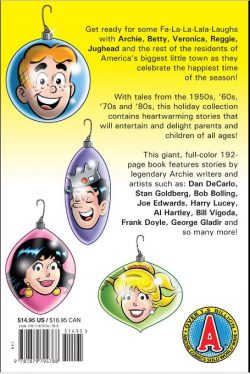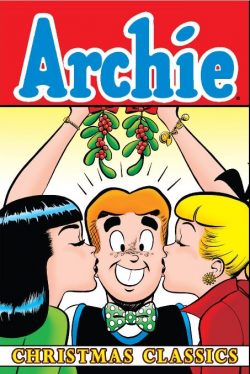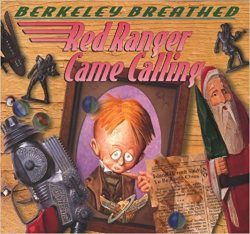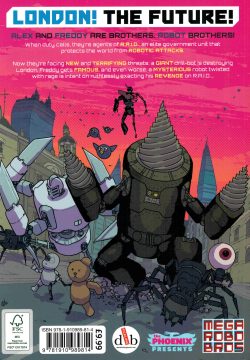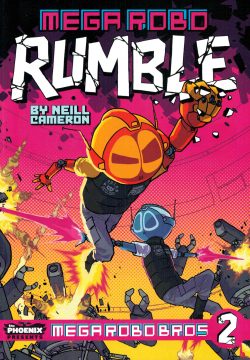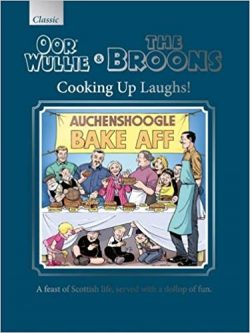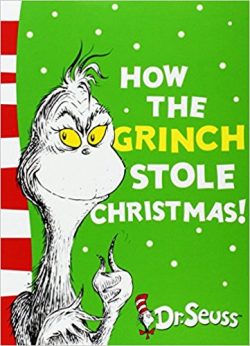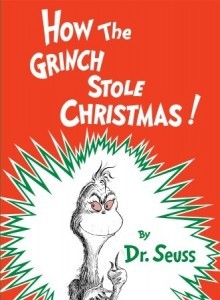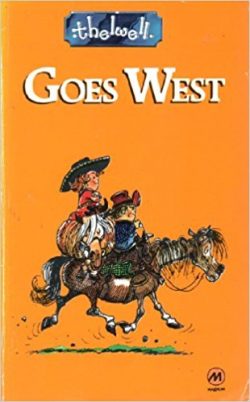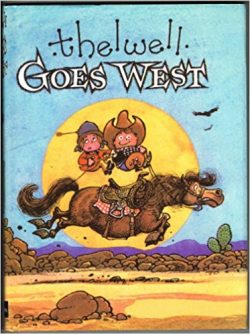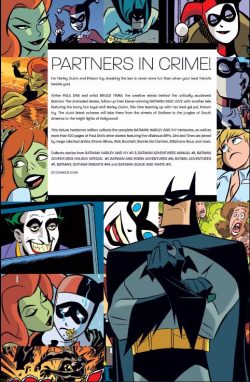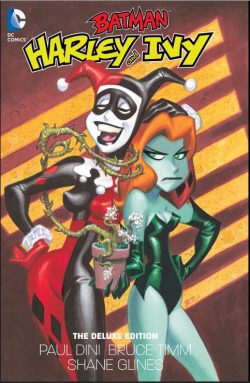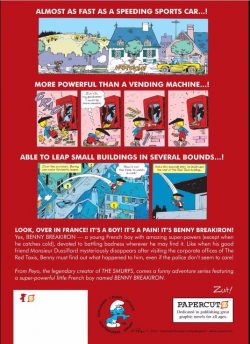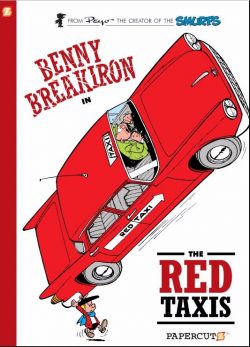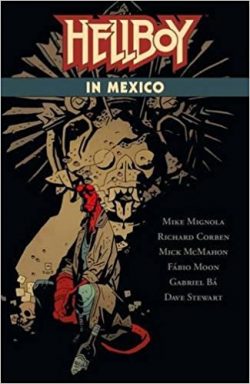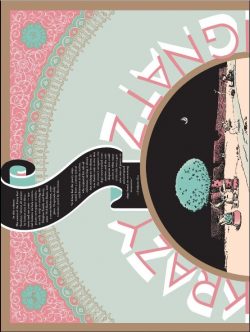
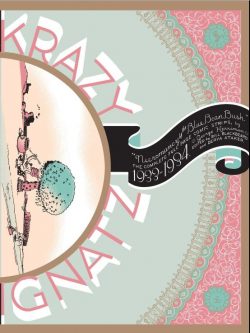
By George Herriman, edited by Bill Blackbeard & Derya Ataker (Fantagraphics Books)
ISBN: 978-1-56097-620-2
The Krazy Kat cartoon strip is arguably the pinnacle of graphic narrative innovation; a singular and hugely influential body of work which shaped the early days of the comics industry and became an undisputed treasure of world literature.
Krazy and Ignatz, as it is now dubbed for these glorious commemorative tomes from Fantagraphics, is a creation which must be appreciated on its own terms. The strip developed a unique language – at once both visual and verbal – and dealt with the immeasurable variety of human experience, foibles and peccadilloes with unfaltering warmth and understanding without ever offending anybody.
Sadly, however, it baffled far more than a few…
It was never a strip for dull, slow or unimaginative people who simply won’t or can’t appreciate the complex multi-layered verbal and pictorial whimsy, absurdist philosophy or seamless blending of sardonic slapstick with arcane joshing. It is still the closest thing to pure poesy that narrative art has ever produced.
Herriman was already a successful cartoonist and journalist in 1913 when a cat and mouse who had been cropping up in his ever-evolving, outrageous domestic comedy strip The Dingbat Family/The Family Upstairs graduated to their own feature. Krazy Kat debuted in William Randolph Hearst’s New York Evening Journal on Oct 28th 1913 and – largely by dint of the publishing magnate’s overpowering direct influence and interference – gradually spread throughout his vast stable of papers.
Although Hearst and a host of the period’s artistic and literary intelligentsia (notably – but not exclusively – e.e. Cummings, Frank Capra, John Alden Carpenter, Gilbert Seldes, Willem de Kooning, H.L. Mencken and – latterly – Jack Kerouac) all adored the strip, many local and regional editors did not; taking every potentially career-ending opportunity to drop it from the comics section.
Eventually the feature found a home and safe haven in the Arts and Drama section of Hearst’s papers. Protected there by Hearst’s heavy-handed patronage, the Kat flourished unharmed by editorial interference and fashion, running generally unmolested until Herriman’s death in April 1944.
The basic premise is simple: Krazy is an effeminate, dreamy, sensitive and romantic feline of indeterminate gender hopelessly in love with Ignatz Mouse: rude crude, brutal, mendacious and thoroughly scurrilous.
Ignatz is a true unreconstructed male; drinking, stealing, fighting, conniving, constantly neglecting his wife and children and always responding to Krazy’s genteel advances by clobbering the Kat with a well-aimed brick (obtained singly or in bulk from noted local brick-maker Kolin Kelly) which the smitten kitten invariably misidentifies as tokens of equally recondite affection.
The third crucial element completing an anthropomorphic eternal triangle is lawman Offissa Bull Pupp, a figure of honesty and stolid duty completely besotted with Krazy, professionally aware of the Mouse’s true nature, yet hamstrung – by his own amorous timidity and sense of honour – from permanently removing his devilish rival for the foolish feline’s affections.
Krazy is, of course, blithely oblivious to Pupp’s dilemma…
Also populating the ever-mutable stage are a stunning supporting cast of inspired bit players such as Joe Stork, dreaded deliverer of unplanned, and generally unwanted, babies; hobo Bum Bill Bee, unsavoury conman and trickster Don Kiyoti, self-aggrandizing Walter Cephus Austridge, busybody Pauline Parrot, inscrutable, barely intelligible Chinese mallard Mock Duck, dozy Joe Turtil and a host of other audacious characters, all equally capable of stealing the limelight or even supporting their own strip features.
The exotic, quixotic episodes occur in and around the Painted Desert environs of Coconino (based on the artist’s vacation retreat in Coconino County, Arizona) where absurdly surreal playfulness and the fluid ambiguity of the flora and landscape are perhaps the most important member of the cast.
The strips are a masterful mélange of unique experimental art, wildly expressionistic and strongly referencing Navajo art forms whilst graphically utilising sheer unbridled imagination and delightfully evocative lettering and language: alliterative, phonetically and even onomatopoeically joyous with a compelling musical force (“Mitt me at the Musharoonâ€, “l’il dahlink†or “Ignatz, ware four is thou at Ignatz??â€).
Yet for all that, the adventures are poetic, satirical, timely, timeless, bittersweet, self-referential, fourth-wall bending, eerily idiosyncratic, astonishingly hilarious escapades encompassing every aspect of humour from painfully punning shaggy dog stories to riotous, violent slapstick.
Sometimes Herriman even eschewed his mystical mumblings and arcane argots for the simply sublime grace of a supremely entertaining silent gag in the manner of his beloved Keystone Cops and other stars of silent slapstick comedies…
The wealth of Krazy Kat collections started in the late 1970s when the strip was first rediscovered by a better-educated, open-minded and far more accepting generation. This delirious tome, covering the last of the full-page black-&-white Sunday Page material from 1933-1934 – prior to a switch to full colour and a sheltered safe-haven in a sheltered Hearst comics insert package – comes in a comfortably hefty (231 x 305 mm) softcover or eBook edition: one last monochrome masterpiece expansively “Compounding the Complete Full-Page Comics Strips, with some extra Raritiesâ€â€¦
The machinations that brought about that transformation and an account describing the herculean efforts involved in finding and restoring those final strips can be found in Bill Blackbeard’s Introduction ‘No Kidding… We’ve Run Out of Kats!’, supplemented by examples of another Herriman lost treasure – ‘Mary’s Home From College’ – plus contemporary photo-material from King Features promotional magazine Circulation, and additional strip examples such as Dempsey Under Wraps and beguiling hand drawn postcard by the master himself.
Extra treats manifest in a selection of Herriman’s Krazy Kat Daily strips hilariously discussing the gender-confabulation of the mixed-up moggy and lost strips and gag-panels are uncovered with samples of ‘The Amours of Marie Anne Magee’, ‘Embarrassing Moments’, ‘Darktown Aristocracy Caught in the Swirl’ and ‘Baron Bean’ plus pertinent newspaper clippings featuring the artist from a time when cartoonists were actual celebrities…
On to the strips then: within this compelling compendium of incessant passions thwarted in another land and time, the torrid triangular drama dwindles and expires in the middle of 1934 in preparation for later, greater full-colour glories but never ceases to revel in the wild wonders of blithe whimsy as winningly as ever, but with the old familiar faces popping up to contribute to the insular insanity and well-cloaked social satire…
One thing to note: during this period local editors who actually ran the strip usually had the manically expressive layouts reformatted to standard tiers – and the Fantagraphics staff are to be praised eternally for their efforts to restore the original designs…
We open on January 1st 1933 with the tangled trio greeting another year with the same heartworn and forlorn shenanigans, although Offisa Pupp is now pressing his attentive suit with more desperate forcefulness…
A spate of strips sees the lawdog proactively stalking and thwarting Ignatz, but as always, the mouse’s continual search for his ammunition of choice and the perfect ambush spot predominate, leading to many brick-based gags and increasing frustration.
One happy circumstance is the growing use of the county lock-up as the escalating slapstick silliness frequently concludes with Ignatz incarcerated. Naturally that just means the malign Mus Musculus (look it up if you must) magnifying his malevolent efforts; even regularly taking to the air in a series of aeronautical escapades…
In response, Coconino’s (occasionally “Kokoninoâ€) Finest has taken to hurling missiles of his own in retaliation and – on the rare but exceeding satisfactory occasion – Pretaliation…
Of course, the mouse is a macho jerk who enjoys revenge served hot, cold or late…
The region still abounds with a copious coterie of confidence tricksters – a scurrilous sub-population which seems to grow weekly – but a new addition is a perennial reoccurring abundance of giant fungi, adding confusion, bewilderment and visual zest to proceedings …
Amongst the new arrivals is a colony of extremely bellicose kingfishers and a helpful sawfish and greater use of inspired comedy trigger Joe Stork, whose delivery of unexpected babies still brings dread responsibility and smug schadenfreude in equal amounts to all denizens of the county and the introduction of enhanced aerial bombardment courtesy of an actual flying carpet…
As ever there is a solid dependence on the strange landscapes and eccentric flora – especially the viciously ferocious coconuts – for humorous inspiration, and bizarre weather plays a greater part in inducing anxiety and bewilderment. Strip humour never got more eclectic or off-kilter…
Supplementing the cartoon gold and ending this slim tome is another erudite and instructional ‘Ignatz Mouse Debaffler Page’, providing ‘Komments on Mysteries of the Master’s Drawing Mesa’ through pertinent facts, snippets of contextual history and necessary notes for the young and potentially perplexed.
Herriman’s epochal classic is a phenomenal achievement: in all the arenas of Art and Literature there has never been anything like these comic strips which have shaped our industry and creators, and inspired auteurs in fields as disparate as prose fiction, film, dance, animation and music, whilst delivering delight and delectation to generations of wonder-starved fans.
If, however, you are one of Them and not Us, or if you actually haven’t experienced the gleeful graphic assault on the sensorium, mental equilibrium and emotional lexicon carefully thrown together by George Herriman from the dawn of the 20th century until the dog days of World War II, this astounding compendium is a most accessible way to do so.
© 2004, 2015 Fantagraphics Books. All rights reserved.

